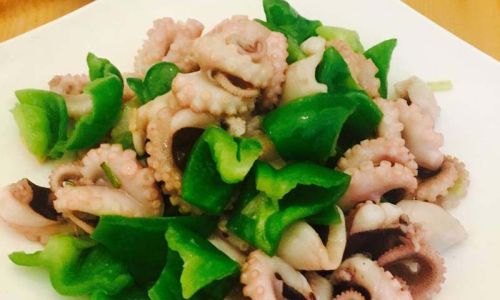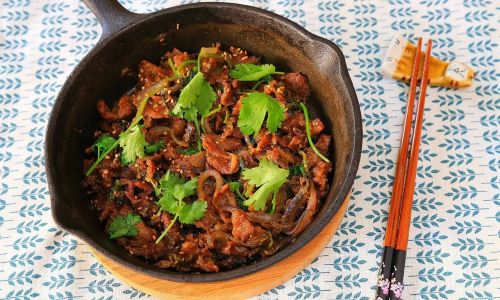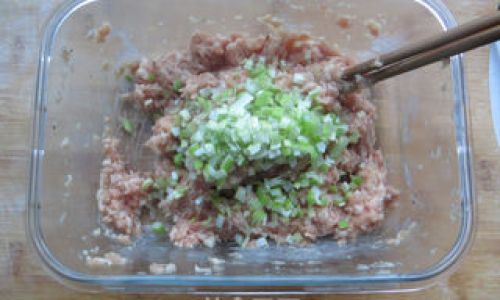Introduction
Stir-fried octopus, a dish celebrated in cuisines worldwide, combines tender seafood with a medley of vibrant flavors and textures. While it may seem intimidating to prepare, mastering this recipe hinges on understanding key techniques, from selecting the freshest ingredients to executing precise cooking methods. This guide demystifies the process, offering step-by-step instructions, expert tips, and cultural insights to help you create a restaurant-quality stir-fried octopus dish at home. Whether you’re a novice cook or a seasoned chef, this article will equip you with the knowledge to transform this cephalopod into a culinary masterpiece.
Choosing the Right Octopus: Fresh vs. Frozen
The foundation of a great stir-fried octopus begins with sourcing high-quality ingredients. While fresh octopus is ideal, it’s often less accessible outside coastal regions. Frozen octopus, however, is widely available and surprisingly reliable, as freezing helps tenderize the meat. When selecting, look for specimens with intact tentacles, a mild oceanic scent, and a violet hue. Smaller octopuses (under 3 pounds) are preferable for stir-fries, as they cook faster and remain tender. Larger varieties may require extended tenderizing.
Preparation: Cleaning and Tenderizing
Cleaning octopus is a critical step that demands attention to detail. Start by rinsing the octopus under cold water, removing any visible debris. Use kitchen shears to trim the eyes and beak—a hard, cartilage-like structure located at the base of the tentacles. Some recipes recommend removing the ink sac, though it’s edible and adds a subtle brininess. For thorough cleaning, gently peel away the purplish skin, revealing the pale flesh beneath.

Tenderizing is non-negotiable for avoiding rubbery texture. Three methods dominate:
- Boiling: Simmer the octopus in seasoned water with aromatics like bay leaves, peppercorns, and vinegar for 30–45 minutes, until tender.
- Baking Soda: Massage the meat with a baking soda solution (1 tsp per pound) and let it rest for 1 hour before rinsing.
- Mechanical Tenderizing: Pounding the meat with a meat mallet breaks down tough fibers.
Once tenderized, slice the octopus into bite-sized pieces, ensuring uniformity for even cooking.
Marinating: Elevating Flavor and Texture
Marination infuses the octopus with depth while further tenderizing the meat. A classic Asian-inspired marinade includes:
- ¼ cup soy sauce (low-sodium for control)
- 2 tbsp rice wine (mirin or sherry)
- 1 tbsp grated ginger
- 3 minced garlic cloves
- 1 tsp sesame oil
- 1 tbsp honey or brown sugar (optional, for caramelization)
Combine ingredients in a bowl, add the octopus, and refrigerate for 30–60 minutes. Avoid over-marinating, as enzymes in the ginger and garlic can break down the meat excessively.
Stir-Frying Techniques: Heat, Timing, and Ingredients
Stir-frying demands precision. Use a carbon-steel wok or a large skillet with high sides to retain heat. Preheat the pan over medium-high heat until a drop of water evaporates instantly. Add 2–3 tbsp of high-smoke-point oil (peanut, vegetable, or avocado).
Aromatics First: Begin by sautéing 1 tbsp minced garlic, 1 tbsp grated ginger, and 1–2 sliced chili peppers until fragrant (30 seconds). This blooms their flavors without burning.

Octopus Cooking: Add the marinated octopus, spreading it in a single layer. Let it sear undisturbed for 1–2 minutes to develop a golden crust. Stir-fry for an additional 3–4 minutes, tossing continuously. Overcooking risks toughness; aim for an internal temperature of 145°F (63°C).
Vegetables and Sauce: Introduce quick-cooking vegetables like sliced bell peppers, onions, or snap peas. Toss for 2 minutes. For the sauce, whisk:
- 2 tbsp oyster sauce
- 1 tbsp soy sauce
- 1 tsp cornstarch (dissolved in 2 tbsp water)
- 1 tbsp rice vinegar
Pour the sauce into the pan, stirring until it thickens (1–2 minutes). Garnish with sliced scallions and sesame seeds.
Serving Suggestions: Pairings and Presentation
Stir-fried octopus shines as a main course or appetizer. Serve it over steamed jasmine rice, udon noodles, or crispy lettuce cups. For a fusion twist, pair it with kimchi or a tangy daikon salad. Drizzle with chili oil or a squeeze of lime for brightness.
Expert Tips for Perfect Results
- Doneness Test: The octopus is ready when it offers slight resistance to a fork—similar to al dente pasta.
- Avoid Overcrowding: Cook in batches if necessary to maintain high heat.
- Adjust Seasoning: Taste and add soy sauce, honey, or vinegar as needed.
- Leftover Utilization: Use any extras in fried rice, tacos, or pasta.
Common Mistakes and How to Avoid Them

- Skipping Tenderizing: Results in chewy octopus. Always use one of the methods outlined.
- Low Heat: A lukewarm pan steams instead of sears, leading to sogginess.
- Overcooking Vegetables: Add delicate veggies like spinach or bean sprouts in the final minute.
- Inadequate Marinating Time: Less than 30 minutes yields minimal flavor penetration.
Regional Variations: Exploring Global Flavors
- Korean Style: Add gochujang (chili paste), kimchi, and sesame leaves.
- Japanese Influence: Incorporate miso, sake, and bonito flakes.
- Mediterranean Twist: Use olive oil, tomatoes, capers, and oregano.
For spice enthusiasts, toss in sliced Fresno peppers or a dash of Sriracha. Vegetarians can substitute octopus with hearty mushrooms or tofu, adjusting cooking times accordingly.
Health Benefits: Nutrition and Dietary Perks
Octopus is a lean protein powerhouse, boasting 25 grams per 3-ounce serving with minimal fat. It’s rich in vitamin B12, iron, and selenium, supporting brain function and immunity. Omega-3 fatty acids promote heart health, while its low calorie count aligns with weight-management goals.
Conclusion: Embrace the Adventure
Stir-fried octopus is a testament to culinary versatility, blending humility and elegance on one plate. By adhering to these techniques—meticulous preparation, mindful marination, and vigilant stir-frying—you’ll craft a dish that delights the senses and impresses even the most discerning palates. Whether you’re hosting a dinner party or seeking a weeknight indulgence, this recipe invites creativity and rewards effort. So, don your apron, fire up the wok, and let the ocean’s bounty dance in your pan. Your journey to octopus mastery starts now.






0 comments